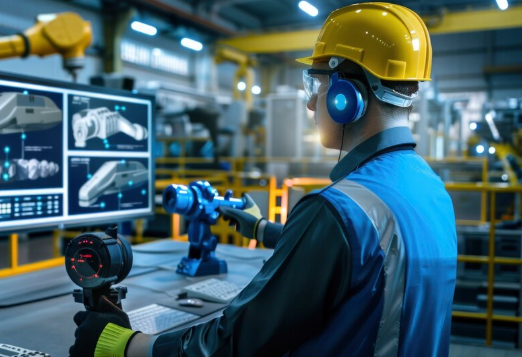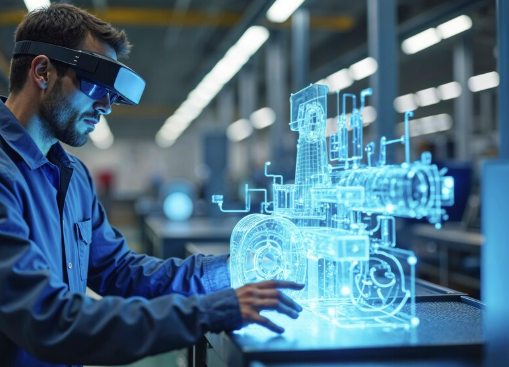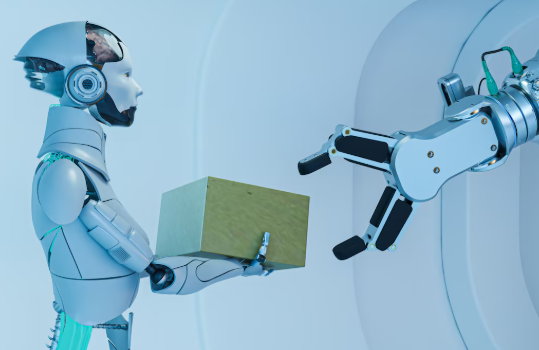Artificial Intelligence (AI) is driving a revolution across industries, but few areas showcase its disruptive potential as clearly as the world of autonomous vehicles. From AI innovation to artificial general intelligence and generative AI, these cutting-edge technologies—when combined with advanced IT services of STL Digital such as cloud infrastructure, edge computing, and real-time data analytics—are laying the foundation for a future where autonomous vehicles are no longer just science fiction.
1. What Are Autonomous Vehicles?
Autonomous vehicles (AVs), often referred to as self-driving cars, autonomous driverless vehicles, or driverless cars, are vehicles equipped with technology that allows them to operate without human intervention. These automobiles their surroundings and make driving decisions in real time.
The goal of AVs is to improve safety, reduce human error, optimize traffic flow, and revolutionize personal and commercial transport. Their development represents a fundamental shift in the way mobility is conceptualized.
2. The History and Origin of Autonomous Vehicles
The concept of autonomous vehicles dates back to the early 20th century. Experiments with radio-controlled cars in the 1920s laid the groundwork for later advancements. In the 1980s, Carnegie Mellon University and Mercedes-Benz pioneered early autonomous vehicle prototypes using basic computer vision and control systems.
One of the most significant milestones came in 2004, when the U.S. Department of Defense launched the DARPA Grand Challenge, encouraging innovation in self-driving car technology. This event spurred research and investment from universities and tech companies worldwide.
Since then, major players like Google (now Waymo), Tesla, Uber, and traditional automakers have accelerated the progress of AVs, integrating AI innovation, machine learning, and computer vision to push the boundaries of what autonomous vehicles can do.
3. The Rise of Autonomous Vehicles
Autonomous vehicles, also known as autonomous driverless vehicles or driverless cars, are becoming increasingly prevalent on roads and in public discourse. These self-driving autonomous cars rely on AI-powered systems for navigation, obstacle detection, decision-making, and learning from real-time traffic scenarios. The evolution of autonomous vehicles hinges on AI’s capacity to interpret massive datasets and improve with experience.
According to Statista, the global autonomous vehicle market amounted to almost 17,000 units in 2022. By 2030, this figure is expected to grow dramatically to around 125,660 units, highlighting the expanding role of AI in transportation innovation.
4. AI Innovation in Driverless Technology
At the heart of self-driving autonomous cars is advanced AI innovation. Generative AI and artificial general intelligence are not only helping vehicles understand their environment but also predict and react to human behavior, road conditions, and unforeseen hazards. These intelligent systems utilize deep learning, computer vision, and natural language processing to make real-time driving decisions.
5. Generative AI: Creating Smarter Systems
Generative AI models are being used to simulate millions of real-world scenarios, helping vehicles adapt without physical testing. This type of AI allows developers to train autonomous vehicles on rare but critical edge cases, making driverless cars significantly safer and more adaptable.
6. Artificial General Intelligence: Moving Toward True Autonomy
Unlike narrow AI, artificial general intelligence (AGI) aims to perform any intellectual task a human can do. In the context of autonomous driverless vehicles, AGI will enable systems to make more human-like judgments, learn from context, and respond more naturally to ambiguous road situations, bringing us one step closer to full autonomy.
7. AI Application in Business and Industry
AI applications in business are expanding beyond analytics and chatbots. In the realm of logistics, retail, and manufacturing, companies are now investing in autonomous delivery fleets and robotic systems. This not only increases efficiency but also allows for 24/7 operations with fewer safety concerns.
8. Market Growth and Adoption Trends
As per Statista, there were approximately 31 million vehicles with at least some automation in operation in 2019. This number is forecasted to rise to over 54 million in 2024. Moreover, the global autonomous car market, valued at $24 billion in 2021, is anticipated to reach nearly $62 billion by 2026, demonstrating the scale of this AI-powered shift.
9. Key Challenges in Scaling Autonomous Technology
Despite remarkable progress, several challenges persist—ranging from regulatory uncertainty and ethical concerns to the need for improved AI models and smart infrastructure. Ensuring cybersecurity in autonomous vehicles is also becoming a top priority, as these systems are vulnerable to hacking and data breaches.
10. Integration with Smart Cities
The rise of autonomous vehicles is closely linked to the development of smart cities. Traffic lights, road sensors, and IoT infrastructure will work in tandem with AVs to create more efficient and less congested urban environments. AI innovation in Product Engineering enables vehicles to communicate not just with each other but with the city infrastructure itself.
11. Environmental Impact and Sustainability
AI-driven autonomous vehicles can significantly reduce emissions and fuel consumption through optimized driving patterns. By minimizing stop-and-go traffic, maximizing efficiency, and integrating with electric vehicle technology, autonomous cars contribute to bringing Sustainability to the future.
12. Ethics and AI Decision-Making
A critical aspect of autonomous driving is how vehicles make ethical decisions. If an accident is unavoidable, how does an AI system decide the lesser of two harms? AI application in business must also navigate ethical frameworks to ensure responsible deployment of technology.
13. Data Collection and Privacy Concerns
Autonomous vehicles collect vast amounts of data for navigation and learning. This raises questions about data ownership, privacy, and surveillance. As AVs become mainstream, regulations around how data is stored, processed, and protected will become increasingly important.
14. Human-AI Collaboration
Despite their autonomy, AVs must coexist with human drivers for the foreseeable future. AI innovation is being directed toward understanding human behaviors and gestures to ensure smooth integration of autonomous driverless vehicles into mixed-traffic environments.
15. Economic Impacts and Job Displacement
The widespread adoption of self-driving cars could disrupt labor markets, particularly in transport and logistics. However, new jobs will emerge in AI training, AV maintenance, and software engineering. Businesses must prepare for this shift through reskilling and adaptation.
16. Role of 5G and Edge Computing
Fast data processing and low latency are essential for AVs. 5G networks and edge computing will play a pivotal role in enabling real-time responses and reducing dependence on centralized cloud systems. This infrastructure is crucial for safe and efficient AV operations.
STL Digital: Accelerating the Future of Autonomous Vehicles
As the autonomous revolution unfolds, companies like STL Digital are at the forefront of helping industries harness the power of AI. With deep expertise in AI applications in business and a strong focus on transformative solutions, STL Digital empowers manufacturers to seamlessly integrate AI into their autonomous systems. Explore STL Digital’s vision for the future of smart manufacturing and mobility to see how innovation meets execution.
The future of autonomous vehicles isn’t just about removing the driver—it’s about reimagining mobility altogether. With the integration of smart cities, 5G connectivity, and AI-powered decision-making, the journey ahead points toward cleaner, safer, and more intelligent transportation systems.



